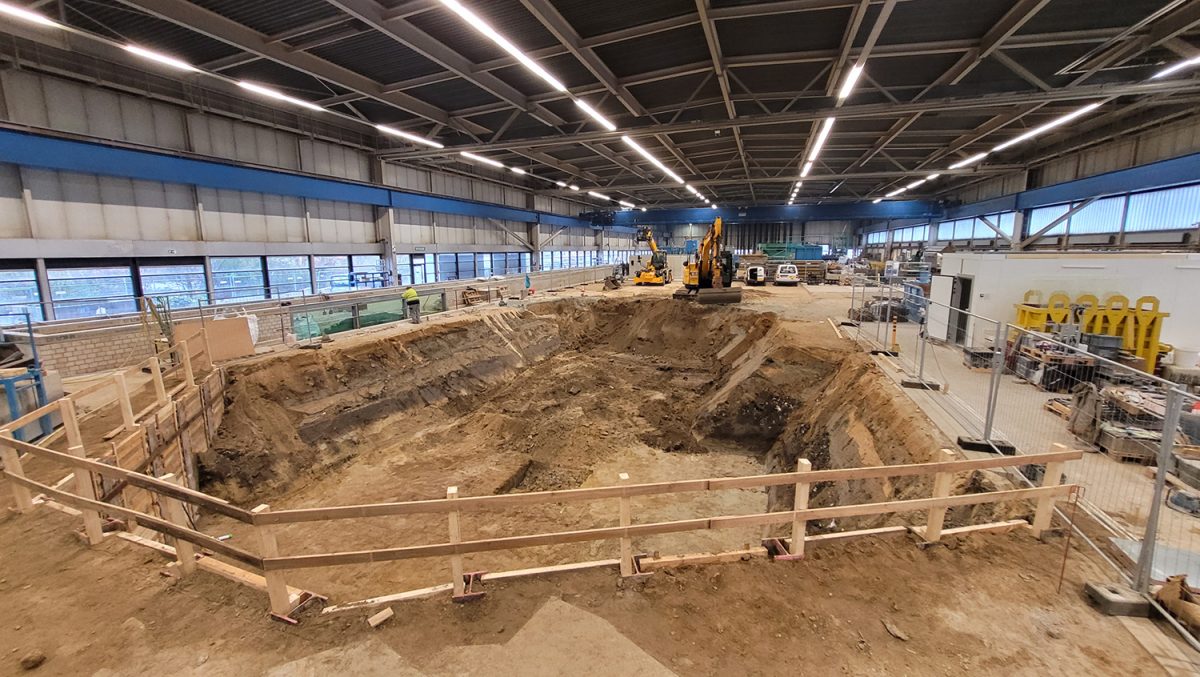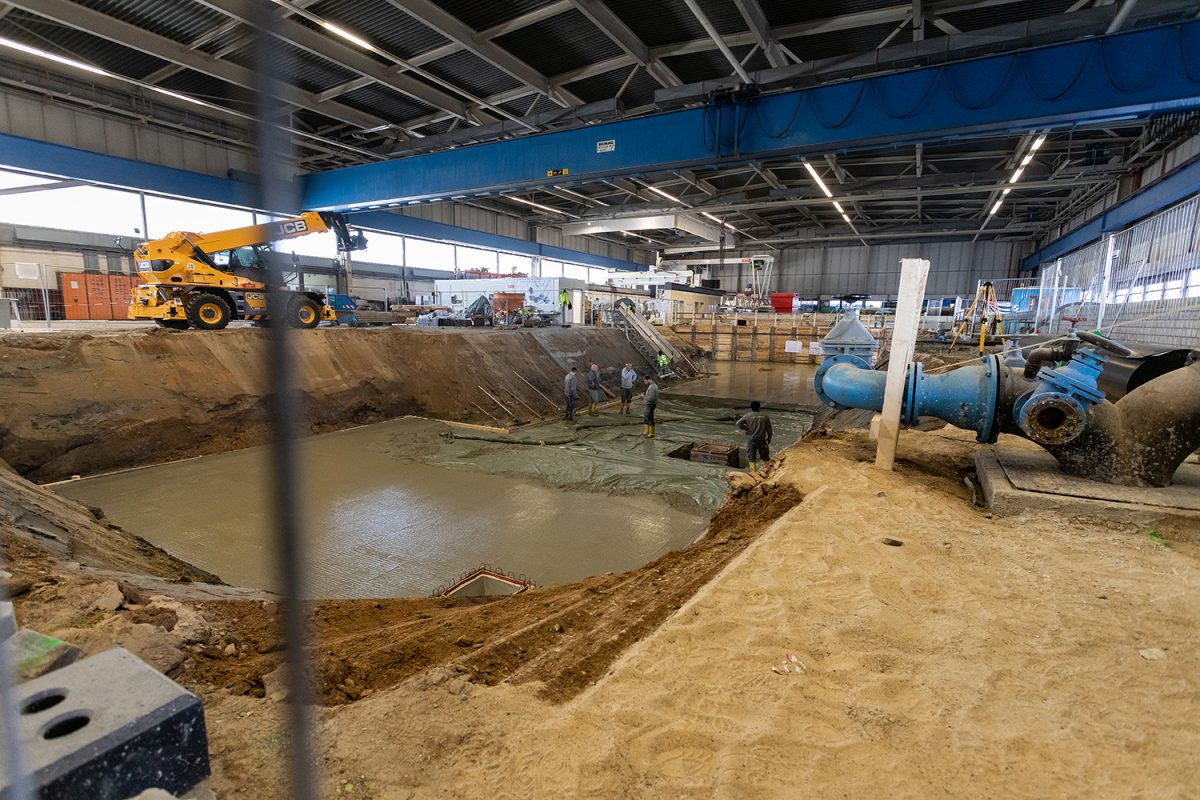Marine conditions in Braunschweig Leichtweiß-Institute for Hydraulic Engineering and Water Resources receives saltwater wave flow channel
A huge hole is currently gaping in the experimental hall of the Leichtweiß-Institute for Hydraulic Engineering and Water Resources (LWI). Where until recently a model of the Wendebach reservoir with a weir system was located, a large-scale research facility suitable for saltwater is now being built that is unique of its kind in Europe. The new channel combines salt water, waves and flow. Here, scientists will soon be able to study living marine vegetation for the first time at the LWI.
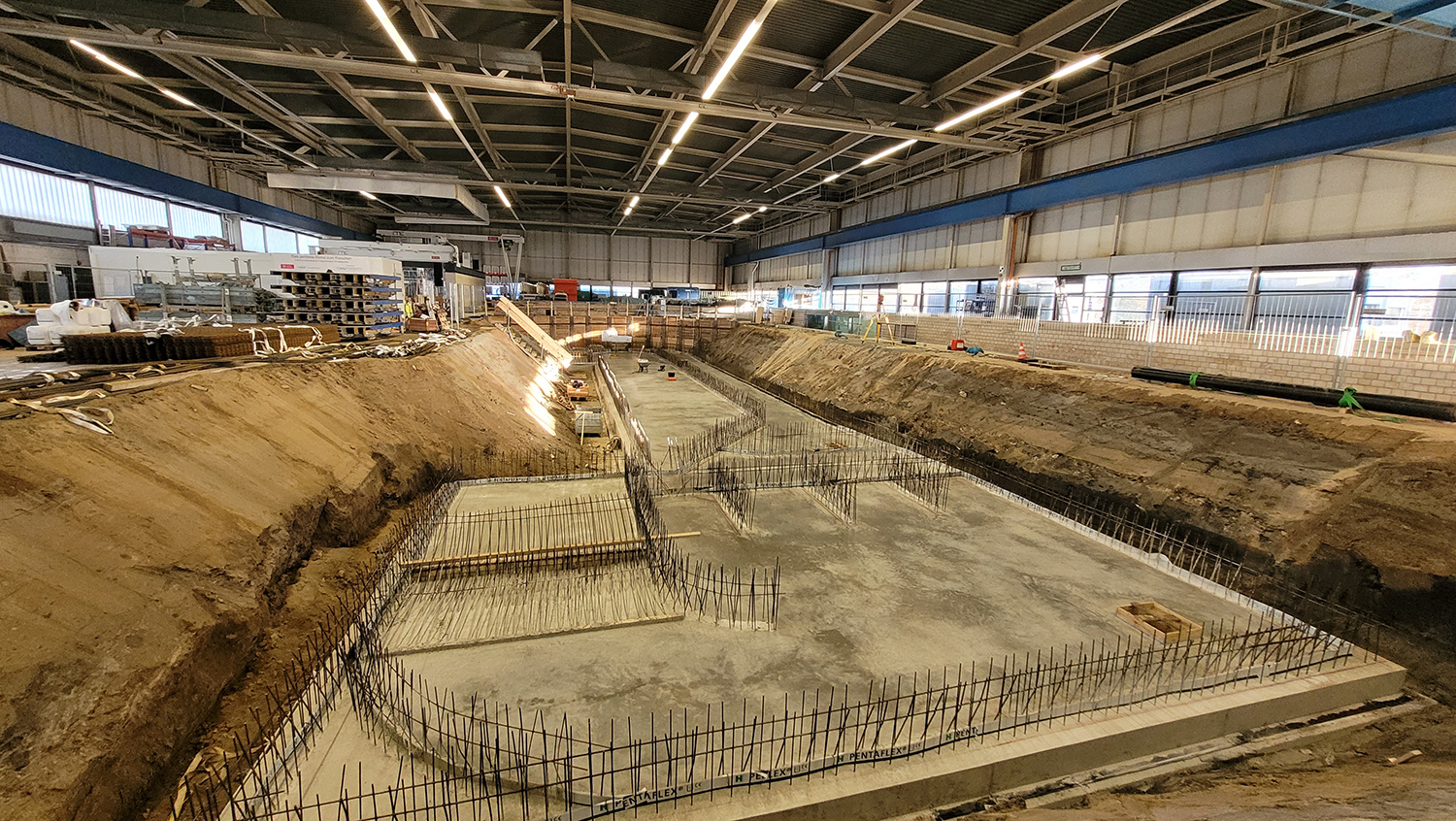
The concrete base was poured at the beginning of the year. Photo credit: David Schürenkamp/TU Braunschweig
The facility is part of the “EnviSim4Mare” project funded by the German Federal Ministry for Economic Affairs and Climate Action (BMWK), which is researching how the growth of mussels, algae and other marine life influences the load-bearing capacity of offshore wind turbines and other maritime constructions. With the new channel, the project team can gain insights into the processes that take place around marine vegetation. The goal is to reduce the high maintenance effort and extend the lifetime of marine facilities.
Experiments despite construction site
There is still little to see of the canal itself. After the subsoil was prepared, the concrete base was poured at the beginning of the year. Research in the experimental hall should continue as unhindered as possible despite the construction work: The Digital Building Fabrication Laboratory is in operation and the experiments in the experimental flumes are also still taking place. In addition, the 90-metre long wave channel next to the construction site hole is currently receiving two new wave machines.
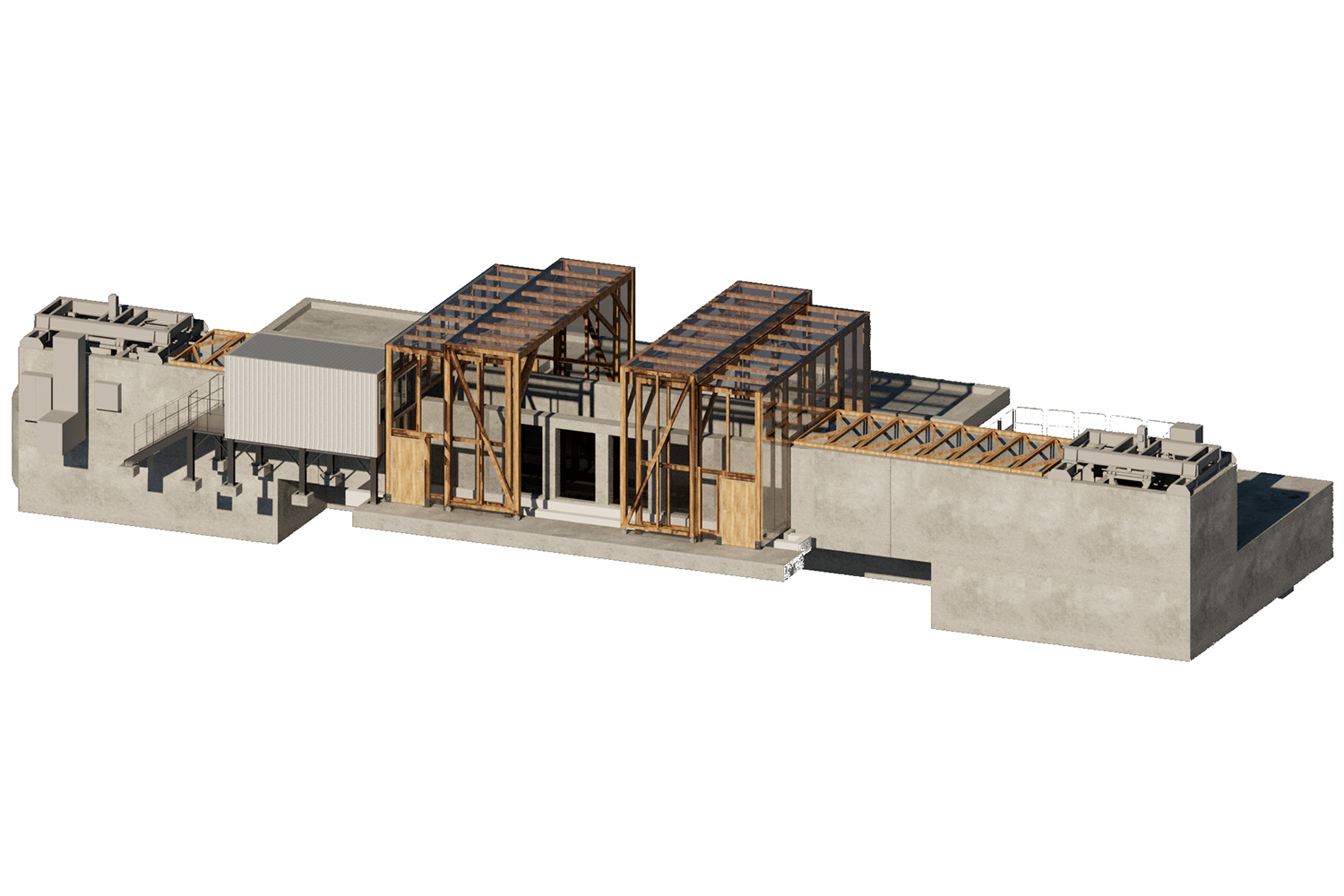
The wave and current channel, which is suitable for salt water, will be 30 metres long, three metres wide and 2.50 metres deep. Photo credit: LWI/TU Braunschweig
The new construction takes up about a quarter of the hall: the wave and current channel, which is suitable for salt water, will be 30 metres long, three metres wide and 2.50 metres deep. The blade of the wave machine measures 2.50 by three metres. The researchers can generate wave heights of up to 80 centimetres with it. Four pumps with a maximum volume flow of around 12,000 m³/h are used to generate the flow. In addition to two wave machines and a flow generator, the plant is also equipped with a water treatment system. To reduce fresh water consumption and regulate the required aquatic conditions, the water is treated and reused in a closed circuit.
Fresh water becomes seawater
Water-impermeable reinforced concrete is used for the use of the canal with salt water. “So that the reinforcement underneath does not corrode and no salt water gets into the groundwater,” says Dr.-Ing. David Schürenkamp, senior research associate in the Hydromechanics, Coastal and Ocean Engineering Department at LWI.
Since the experimental hall is located in a water protection area, the salt content in the canal must be below three per cent. To achieve this, the LWI team feeds highly concentrated brine into the water treatment plant, which produces seawater from the normal fresh water. “This allows us to create the best marine conditions for marine organisms,” explains David Schürenkamp.
From the North Sea to Braunschweig
Mussels, barnacles and algae, which previously inhabited experimental bodies in the North Sea, will soon feel at home in the canal. For this purpose, the pH value, salinity, temperature and oxygen are continuously measured and regulated.
Scientists from the project partner Alfred Wegener Institute Helmholtz Centre for Polar and Marine Research (AWI) had deployed test bodies at suitable offshore locations around Helgoland and Nordergründe and observed how mussels docked there. These are larger stainless steel tubes and plates that mirror the surfaces of wind farm elements. “You can see how the piles corrode and the stainless steel is literally eaten up,” reports David Schürenkamp. After sufficient settlement of marine vegetation, the test bodies are placed in the Braunschweig test bed and further investigated in the saltwater wave current channel.
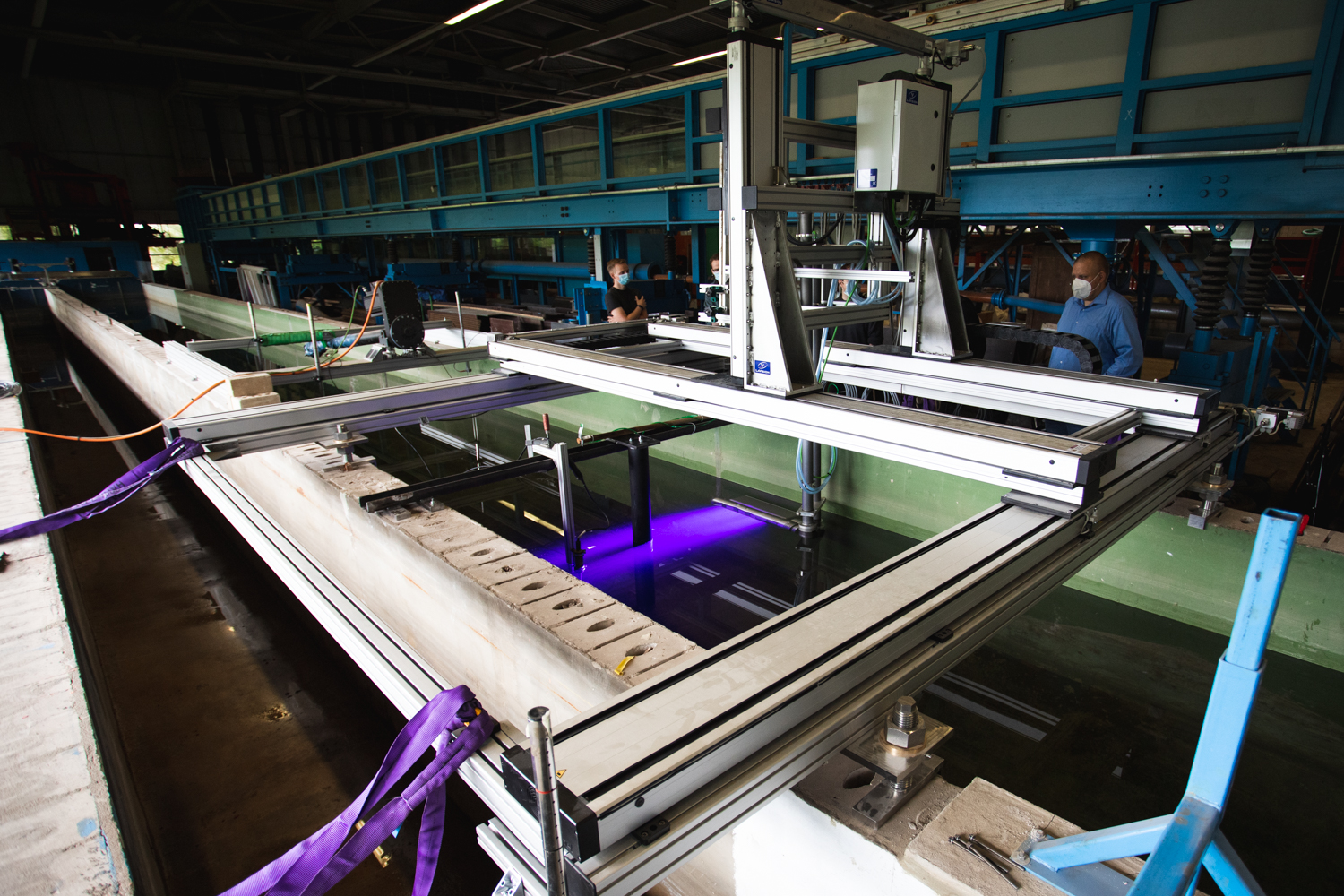
The so-called Shake-The-Box 4D-PTV system was set up on a wave channel in the LWI’s experimental hall. Photo credit: Max Fuhrmann/TU Braunschweig
By autumn, the construction including technical equipment (measurement and control technology, heat and ventilation technology, water treatment) should be in place. Then pumps and wave machines will be tested, the canal tested with flow and waves only, and the salinity properly adjusted. The first experiments are then carried out. In the course of this, the scientists will also use a crane to place the Shake-The-Box 4D-PTV system on the canal, with which they can measure the flow around structures.

